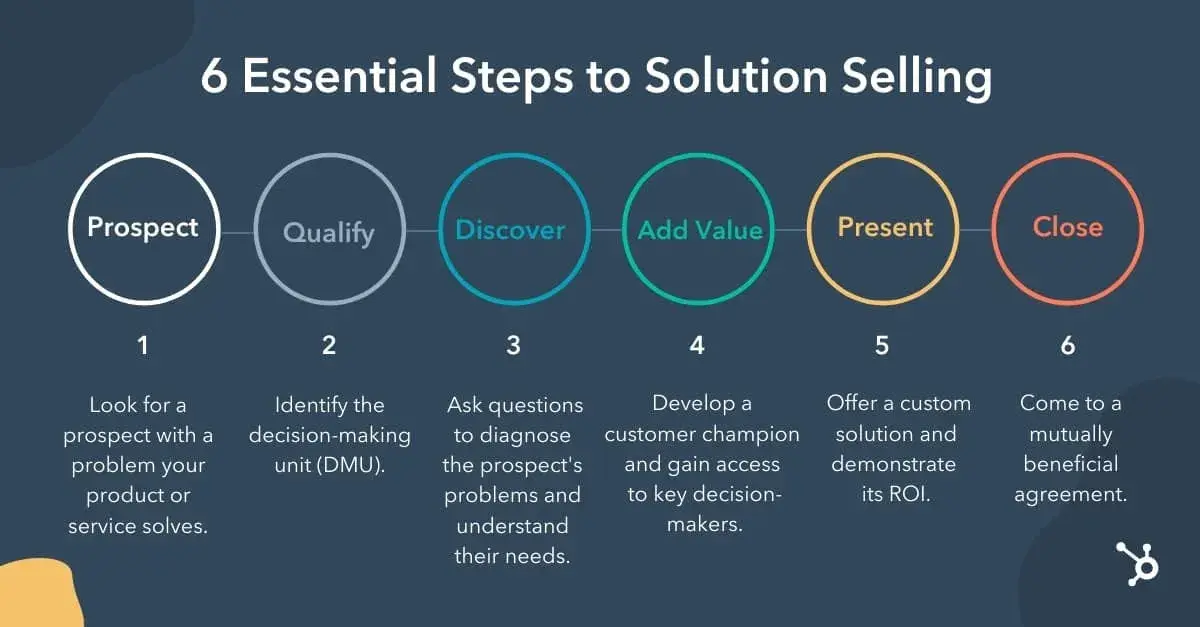Advanced Solution Selling
Rethinking the Old Model for Today’s Buyers
- Home
- Persuasion Articles
- Advanced Solution Selling
Is Solution Selling Really Dead?
You’ve likely seen the headlines.
“Solution selling is dead.”
“Buyers are too informed.”
“Selling to pain points is passé.”
Before we pass judgment on those claims, let’s take a closer look at what Solution Selling really is…
Solution Selling Definitions
"Solution selling is a sales approach that focuses on understanding customer needs and pain points to recommend a tailored solution, rather than simply pitching a product." -Google AI Overview
Solution selling is a sales methodology wherein salespeople consider the needs of their prospects and recommend products or services that can best solve their problems. - Zendesk.com
“Solution selling focuses on the customer and the problems they’re experiencing.”
“Solution selling emerged as a sales methodology coined in the late 1970s by Michael Bosworth. By solving a problem, a rep finds a customer a “solution”.
"The core sales philosophy behind solution selling is the focus should always be on helping customers solve their business problems' - Richardson Sales Performance
"Solution selling is a sales methodology where a salesperson holistically considers a prospect's needs, so they can recommend specific products or services that will best accommodate their individual problems and concerns." - Hubspot

The real problem? It’s the word “problem.”
What if the critics are right—about part of the problem—but wrong about the solution?
Most of what’s being criticized is a narrow, outdated view of solution selling:
➤ A prospect states a problem
➤ You match a product to the problem
➤ You list some benefits
➤ You hope it’s enough to win the sale
Solution selling traditionally casts the salesperson as THE ultimate authority in the conversation—not simply one of many. But with today’s internet-savvy buyers, that role isn’t as pervasive as it once was.
“Customers didn’t know how to solve their own problems, even though they often had a good understanding of what their problems were,” they write in their book The Challenger Sale. “But now, owing to increasingly sophisticated procurement teams and purchasing consultants armed with troves of data, companies can readily define solutions for themselves.” - Brent Adamson, Matt Dixon, and Nicholas Toman of The Challenger Sale
These days buyers are at least halfway through their decision-making before they talk to you.
They want strategic outcomes, not just product specs.
They crave a future transformation—not just a fix.
That’s where the narrow notion application of solution selling is falling short.
Sales isn't just about solving problems. It's about helping buyers imagine better futures.
Solution Selling gets an Upgrade
It’s not about replacing Solution Selling. It’s about enhancing it.
If you look at Solution Selling with new eyes and reflect on the infographic above.
Step 1 may carry less weight today, but Step 2 remains essential.
Step 3, yes—you still ask questions BUT the goal is no longer just to find a problem.
I'm suggesting that NOW as a solution seller your role is to provide insight that helps customers see a vision of a better future.
Be careful about using the word "needs" when talking to a prospect.
It can derail your sales efforts.
I explain this further on the following pages:
• Sales Needs vs Wants – Part 1
• Sales Needs vs Wants – Part 2
When uncovering what a customer wants, you may still find it’s about solving a problem—or it could be about achieving a desired outcome.
You’ve likely heard the phrase “the carrot and the stick.”
It’s just as relevant in sales—and essential to keep in mind when exploring buyer motivation.
There is some subtlety about doing this which I write about ...
👉 Selling to Criteria
Once a Need is Established
One of the ideas behind Solution Selling is the need to know your product really well.
Another is to understand your customers business really well.
I believe the missing ingredient overlooked by many is to understand your customer really well
For example your prospect's decision making process
Sure there are certain factors that influence all buyers.
But there are some things that are unique to a specific buyer.
However, even if you know your product, know your prospect's business and understand them really well you can still miss the sale if your language is loose and not focused on getting your client the outcome they desire.
You need to be speaking Sales Language
When you apply these things you’re no longer reacting to what the buyer says.
You’re leading a conversation that uncovers what they haven’t yet realized they need.
Bottom Line
Bottom Line:
Whether you call it consultative, challenger, insight, or solution selling…
It starts with asking better questions—questions that uncover both pain and potential.
And it comes down to language, influence, and your ability to guide the buyer to their own “aha” moment
- Home
- Persuasion Articles
- Advanced Solution Selling